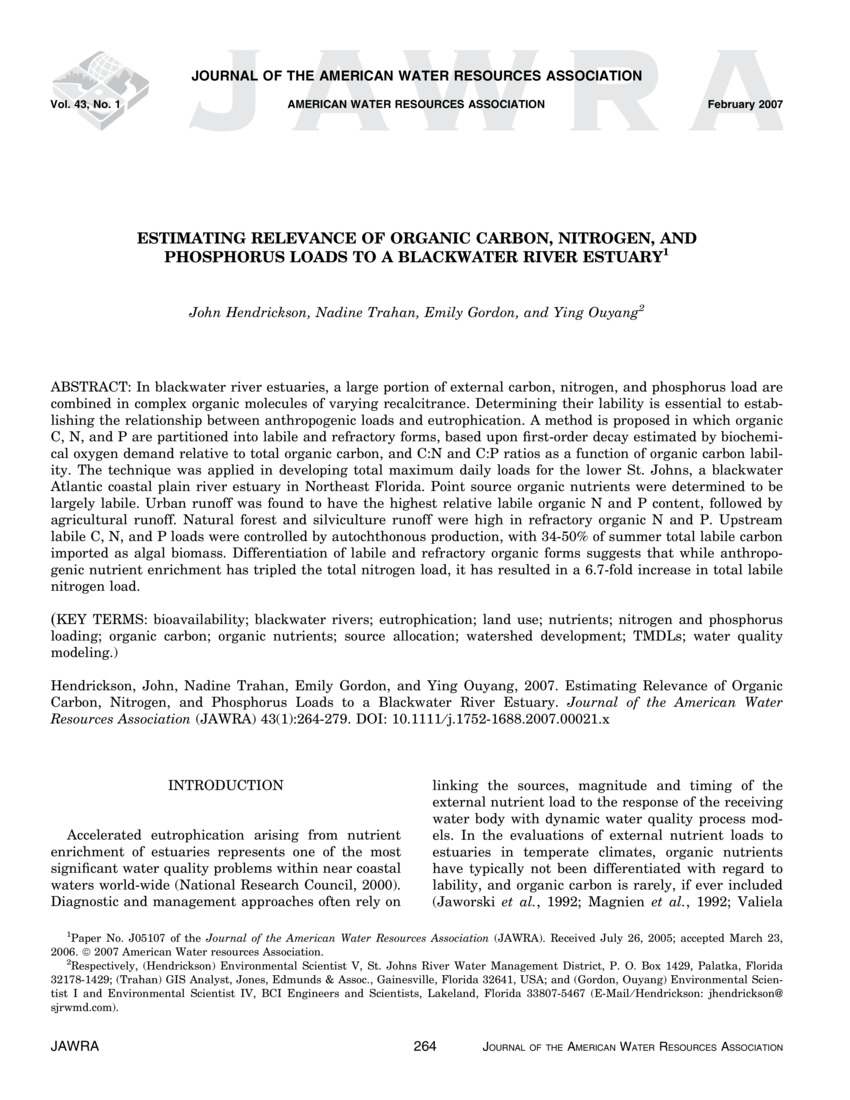Journal Article
AccessEstimating Relevance of Organic Carbon, Nitrogen and Phosphorus Loads to a Blackwater Estuary
In blackwater river estuaries, a large portion of external carbon, nitrogen, and phosphorus load are combined in complex organic molecules of varying recalcitrance. Determining their lability is essential to establishing the relationship between anthropogenic loads and eutrophication. A method is proposed in which organic C, N, and P are partitioned into labile and refractory forms, based upon first-order decay estimated by biochemical oxygen demand relative to total organic carbon, and C:N and C:P ratios as a function of organic carbon lability. The technique was applied in developing total maximum daily loads for the lower St. Johns, a blackwater Atlantic coastal plain river estuary in Northeast Florida. Point source organic nutrients were determined to be largely labile. Urban runoff was found to have the highest relative labile organic N and P content, followed by agricultural runoff. Natural forest and silviculture runoff were high in refractory organic N and P. Upstream labile C, N, and P loads were controlled by autochthonous production, with 34-50% of summer total labile carbon imported as algal biomass. Differentiation of labile and refractory organic forms suggests that while anthropogenic nutrient enrichment has tripled the total nitrogen load, it has resulted in a 6.7-fold increase in total labile nitrogen load.
Publisher - Wiley Interscience
Subjects - Chemical, Carbon, Organic; Chemical, Nitrogen; Chemical, Phosphorus; Chemical, Nutrients; Water, Black; Water, Estuarine
Collection: Section 2: Water Quality (2012)
Citation: Hendrickson J, Trahan N, Gordon E, Ouyang Y. 2007. Estimating Relevance of Organic Carbon, Nitrogen and Phosphorus Loads to a Blackwater Estuary. J. Amer. Water Resources Assoc.; 43(1):264-279 http://dx.doi.org/10.1111/j.1752-1688.2007.00021.x
